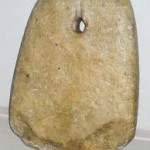 It was in 1992-3 that that I read Jacques Mayol’s book “Homo Delphinus”, it had just come out in French. In it was the story of a Greek Sponge diver called Haggi Statti (Hazzi Stathi), who had recovered the anchor of the Santa Margarita. The story is one of the great stories of freediving.
It was in 1992-3 that that I read Jacques Mayol’s book “Homo Delphinus”, it had just come out in French. In it was the story of a Greek Sponge diver called Haggi Statti (Hazzi Stathi), who had recovered the anchor of the Santa Margarita. The story is one of the great stories of freediving.
The Italian light Cruiser Santa Margarita (Regina Margherita) was paying a courtesy visit to Greece and managed to lose its anchor in the bay of Pigadia in the island of Karpathos. There were no available hard hat divers and the depth was extreme more than 70 mts. Eventually someone informed the Italians that there was a local sponge diver who regularly dived breath hold to those depths. At first they were skeptical, but having very little other options decided to give it a try. After a series of dives to 60-80 mts Haggi succeeded in finding the anchor at 77 mts and attaching a line to it and the anchor was successfully recovered.
The story is very well documented and Haggi was examined by the Italian Naval doctors who were astonished by his feat. Haggi was also examined by the doctors and some curious information emerged.
Apparently he had no ear drum in his right ear and the left ear drum was torn. He could hold his breath for 6:40 under water but not much more than a minute on land. For payment Haggi did not want money but asked the Italians to intercede with the local authorities to obtain for him permission to fish with dynamite for one year.
This story had a huge impact on my thinking and all my understanding of what I knew of freediving. It wasn’t till the 1970’s that Bob Croft achieved 73mts, he was the man that neither Enzo nor Mayol could beat till Mayol brought in the lift bag and variable weights became No Limits. In 1960 Enzo Majorca was warned that his planned 50 mt dive could only end in death as his lungs would collapse by some of the world’s leading physiologists.
Apparently our modern heroes were not in the same league with our free diving ancestors of Greece! What were their secrets how did they do it? How did they dive. I read ever thing I could find in English or French on the Subject, then only about 2 years ago I found a Greek Doctor Nikolas Trikilis, who was the Historian of the sponge divers of Simi and Kalymnos.
Nikolas is passionate on the subject and was immediately willingly, with great good grace, to share his knowledge of their history and techniques. And so began a correspondence which must have tried his patience.



